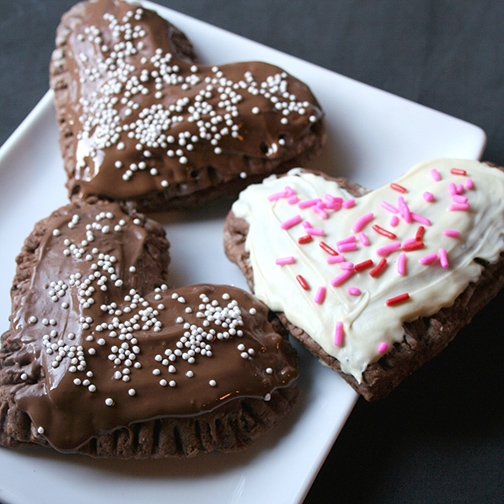FACT: Caramel sauce is delicious. Caramel sauce is dreamy, and filled with cream. But wait. Can you make creamy caramel sauce when you're all out of cream? The answer is yes: it's possible to make caramel sauce with milk instead of cream, and I want to tell you how.
But before I do that, I feel that I should offer a small education on the unusual process that is making caramel, because it is full of moments when your mixture looks WRONG, and I want to tell you about them and why you're actually doing things right.
These are some hard-earned tidbits I have picked up from experience. These hold true whether you're using cream OR milk.
1: A sturdy, heavy-bottomed saucepan with tall sides is your best bet.
You'll see that I didn't quite follow my own advice in the photo tutorial, but I am pretty accustomed to making this sauce so I have learned how to do it. If you have never made caramel, you'll be happy for the tall sides on a pot, because of the next thing:
2: When you add the milk to the sugar, the reaction can be scary.
The basic process of making caramel sauce is this: you'll melt some sugar, then you'll incorporate milk, then cook until thickened.
But here's the thing: when you add the liquid to the hot sugar, it's going to have a firecracker of a reaction: it's going to bubble, it's going to hiss, it's going to seem like something is very wrong. Guess what? It's totally normal. You just want those high walls on the pot so that when it gets bubbly and scary, it doesn't make a big mess on your stovetop.
3: When you add the milk to the sugar, weird, hardened bits of sugar will form.
In addition to the crazy reaction, bits of sugar will solidify and look like ruined lumps and bumps when you add the liquid. Some of them, as you can see above, are really quite scary and wrong-looking. Guess what? Also this is normal. By continuing to cook the liquid, those bits will dissolve gradually. Even that monster-lump above!
4: It's not hard to make caramel sauce, but it requires your full attention.
Making caramel sauce isn't hard, but please give it your undivided attention. It's worth it in the end, because you'll have a smooth, delicious caramel, and won't have any scorched pans to have to deal with later.
OK, now that you've read these cautions, let me tell you how to make caramel with milk instead of cream!
Note: this is a salted caramel sauce. If you're the single person in the world who does not love salt and caramel, you can omit the salt.
Caramel sauce with milk
Makes about 1 3/4 cups
- 2 cups sugar
- 1 3/4 cups milk (I used whole milk)
- 1 teaspoon vanilla
- 1/2 teaspoon salt
Pour the sugar into your large pot. Shift the pot side to side to distribute the sugar evenly.
Put the pot over medium-low heat. Stay nearby, but don't stir or shift the sugar. This is a slow, gentle heating, and nothing visual will really happen for a few minutes. Concurrently, you can combine the milk and the vanilla in a heatproof measuring cup, and heat the mixture in the microwave for about 1 minute (this will help lessen the reaction when the liquid hits the hot sugar in a bit).
After several minutes (it was about 8 minutes for me), you'll see the sugar beginning to liquefy. At this point, use a heatproof rubber spatula to turn the mixture over on itself, moistening the still-dry portions of sugar.
Continue heating. As the sugar warms, it will begin to darken in color, first to a sort of beige and then to a light caramel tone. When the sugar has reached a rich caramel tone, medium-brown but not dark, remove from heat. Now, be ready for some hissing and bubbling as you pour about 1/3 to 1/2 of the milk mixture into the caramel mixture. It will hiss, it may bubble, hardened bits may form, but it shouldn't bubble over the sides of the pot. Once the bubbling has subsided, add the rest of the milk mixture, and return the pot to the burner, and put it on medium-low heat. Remember: those hardened bits = totally normal.
Stir constantly as the mixture cooks. You'll see that the hardened bits begin to shrink and then dissolve. Once they are mostly dissolved, stir in the salt.
Cook for about 10 minutes for a thinner caramel sauce, 15-20 minutes for a thicker sauce. Remove from heat when the mixture is about 20% short of how thick you'd like it, because it will thicken more as it cools. If it seems at all lumpy, strain it through a fine mesh strainer.
Transfer the mixture to a heatproof container to cool. Store leftovers in the fridge in jars. Enjoy on EVERYTHING.









































































